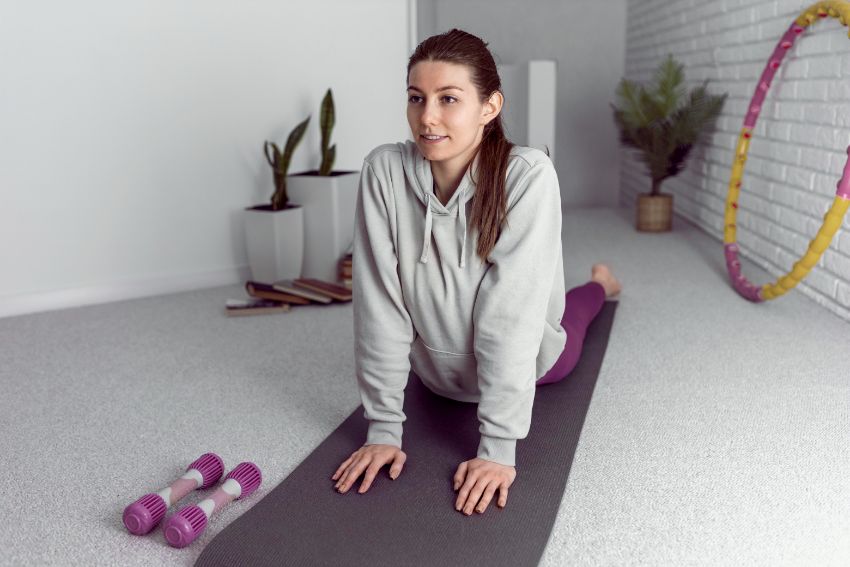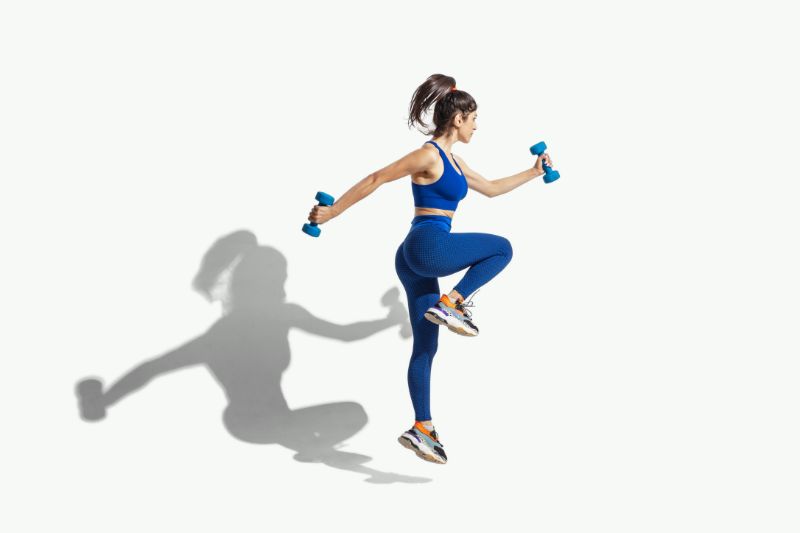Somatic exercise is a form of movement therapy that emphasizes internal perception and awareness of the body. It is designed to help individuals recognize and release physical tension that may be contributing to chronic pain and stress. By focusing on the mind-body connection, somatic exercises aim to reset the body’s muscle memory through gentle movements and conscious awareness, potentially improving posture and physical mobility.
This approach involves a series of movements that are typically performed slowly and with attention, allowing the practitioner to explore their body’s sensations and learn how to control their movements more effectively.
The underlying theory suggests that through somatic exercise, people can enhance their nervous system’s responsiveness, thereby promoting a greater sense of relaxation and decreased muscular tension.
Studies on somatic exercise indicate its potential benefits in reducing discomfort associated with conditions like back pain, improving range of motion, and enhancing overall physical and mental well-being. However, more research is needed to fully understand the extent of its effectiveness and the mechanisms through which it operates.
For those interested in exploring somatic exercises, it may be beneficial to engage with trained professionals who can guide the practice safely and effectively. As with any new exercise regimen, it is advisable to consult healthcare providers to ensure it aligns with individual health needs and conditions.
Understanding Somatic Exercise
Somatic exercise is a form of movement therapy that focuses on the internal experience of the body to improve physical awareness and alleviate tension. This practice is grounded in the principle that mental and physical states are interconnected and that enhancing this connection can contribute to overall well-being. Somatic exercises involve slow, conscious movements that aim to retrain the nervous system and help individuals become more aware of their bodily sensations and emotional states.
Common techniques used in somatic exercise include yoga, Pilates, and tai chi, as well as specialized methods such as the Feldenkrais Method and the Alexander Technique. These practices are utilized to identify and release muscle tension, potentially aiding in the reduction of chronic pain and stress. By doing so, somatic exercises may also contribute to improved flexibility and physical function.
Somatic exercise is considered beneficial for those looking to address specific physical issues, such as chronic pain or restricted movement, as well as for individuals seeking a method to maintain overall health and reduce stress. However, the effectiveness of these exercises can vary depending on the individual’s condition and the specific techniques employed.
As with any exercise program, it’s advisable for individuals to consult with healthcare professionals to tailor practices to their specific needs.
Benefits of Somatic Movement
Somatic movement involves a series of exercises designed to increase body awareness and improve physical functions. This practice is rooted in the understanding that the body and mind are interconnected and that physical patterns can influence overall health. Somatic exercises are known to improve flexibility, mobility, and balance, which may help in reducing the likelihood of injuries and support the process of aging healthily.
Research indicates that regular engagement with somatic exercises can be beneficial for managing chronic pain, with studies showing noticeable improvements within a year of consistent practice. Additionally, these exercises can contribute to reduced anxiety levels. Participants often report better recognition and management of the physical signs associated with emotional states, which is a key aspect of somatic training.
Somatic movement also encourages a reduction in stress levels and promotes relaxation, which can lead to improved general well-being. This approach to health management emphasizes emotional awareness and the influence of emotions on physical health, integrating both aspects to foster a balanced state of being.
However, it’s important for individuals to consult healthcare professionals to tailor somatic practices to their specific needs and conditions.
Types of Somatic Exercises
Somatic exercises encompass a diverse array of practices aimed at enhancing body awareness and facilitating relaxation. Key methodologies in this field include Rolfing, Body-Mind Centering, the Alexander Technique, the Feldenkrais Method, and Laban Movement Analysis. Each of these techniques adopts a distinct approach to developing the mind-body connection, with specific exercises tailored to improve internal physical perception and experience.
Additionally, other forms of somatic practices include activities such as dance, yoga, Pilates, and Aikido. While differing in their specific movements and objectives, all share the common goal of somatic movement, which emphasizes the internal experience of movement.
The overarching term ‘somatics’ refers to this broad spectrum of exercises that focus on the sensory experience of the physical body. Somatic Movement Education is a component of this field where individuals learn specific stretches and movements designed to enhance body awareness. This educational aspect contributes to improving overall well-being by encouraging a deeper connection with bodily sensations and movements.
Somatic Stretching Basics
Somatic stretching is a technique that incorporates gentle movements with an increased awareness of bodily sensations to alleviate muscle tension and improve flexibility. Typically facilitated by a Clinical Somatic Educator in a Somatic Movement Center, this method emphasizes internal physical awareness, which is crucial in identifying and addressing issues such as chronic back pain.
The primary aim of somatic movement is to enhance the mind-body connection through slow and mindful movements, which help in gradually releasing persistent muscular tension. This can lead to improvements in posture and balance.
Consistent practice of somatic stretching has been associated with reduced stress levels and better overall health, which may also contribute to injury prevention.
Incorporating Somatic Exercise Into Daily Routine
Incorporating somatic exercises into one’s daily routine can offer several health benefits, including improved flexibility, better mind-body coordination, and enhanced stress management. These exercises focus on body awareness and are designed to release muscle tension which can contribute to improved posture. Engaging in somatic exercises regularly can lead to increased mobility and can help reduce stress levels through relaxation and mindful movement.
Additionally, somatic exercises may contribute to enhanced emotional well-being by fostering a deeper awareness of the physical sensations associated with emotions. This practice can potentially help individuals manage their emotional responses more effectively.
Incorporating these exercises into daily life is a practical approach to integrating physical and mental health activities. It’s advisable for individuals to consider including somatic exercises in their routine to potentially benefit both their physical and emotional health.
Conclusion
Somatic exercise encompasses a range of physical practices, including yoga, Pilates, and tai chi, which focus on fostering body awareness and reducing tension. These exercises aim to enhance the mind-body connection, which can be beneficial in managing and potentially reducing symptoms of chronic pain and stress.
By engaging in somatic exercises, individuals may become more attuned to their bodily sensations and learn how to identify and release patterns of tension that contribute to discomfort. The practice of these exercises involves slow, controlled movements that can help improve flexibility, balance, and overall physical function.
Incorporating somatic exercises into one’s daily routine could be a useful strategy for those looking to improve their physical health and well-being. However, as with any exercise regimen, it’s recommended to consult with healthcare professionals to tailor the approach to individual needs and circumstances.
Read More:


